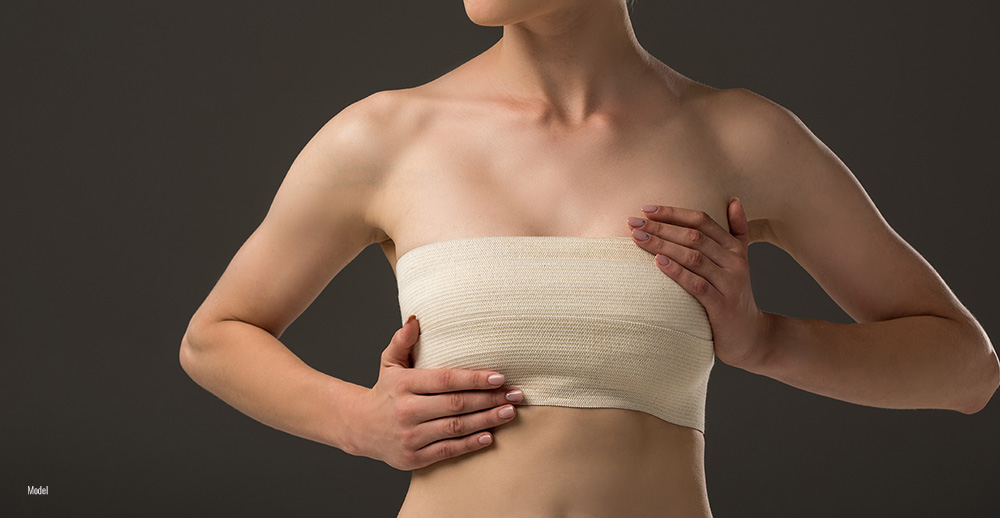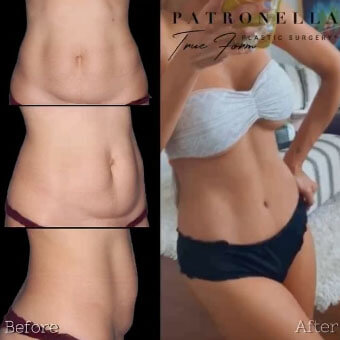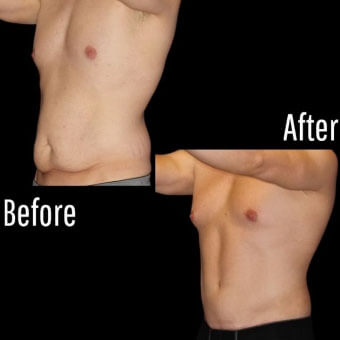Breast Lift Surgery: A Comprehensive Guide to Recovery
Posted August 07, 2024 in Breast Lift

Breast lift surgery (mastopexy) is a popular cosmetic procedure that can elevate and reshape sagging breasts for a more youthful and appealing appearance. While the surgery itself is a critical step in achieving your desired results, the recovery process is just as important to ensure a successful outcome. This comprehensive guide will explain the various stages of recovery from breast lift surgery, offering tips, advice, and what to expect along the way.
6 Min Read:
How Is Breast Lift Surgery Performed?
Perky breasts are for many an ideal form of fit, vibrant femininity. During a breast lift, excess skin is removed, breast tissue is remodeled, and the nipple/areola complex may be repositioned to a more youthful position. Unlike breast augmentation, which involves implants, a breast lift focuses on enhancing the shape and firmness of the breasts. This procedure can be performed alone or with other cosmetic surgeries, such as augmentation or reduction.
What to Expect Immediately After Your Breast Lift
After the surgery, you will be taken to a recovery room, where medical staff will monitor you as the anesthesia wears off. It is common to feel groggy and disoriented immediately after the procedure. You are likely to experience discomfort, swelling, and bruising around the treated area. Prescribed pain medication can help manage this initial discomfort.
Your incisions will be covered with gauze dressings, and you may be fitted with a compression garment or surgical bra to support the breasts and minimize swelling.
The First Week of Breast Lift Recovery
Resting, eating a nutritious diet, staying hydrated, caring for the incisions, and following post-procedure instructions are all crucial. Don’t smoke, drink alcohol, or lift anything over five pounds. Having a friend or family member available to help is beneficial at this stage, especially the first two days after surgery.
- Rest and Limited Activity: The first week after surgery is crucial for rest and limited activity. Avoid any strenuous activities, heavy lifting, or anything that could strain your chest muscles.
- Follow-Up Appointment: Your surgeon will typically schedule a follow-up appointment within a few days after surgery. During this visit, your surgeon will check your healing progress, remove any drainage tubes, and provide further instructions on care.
- Pain Management: Continue taking prescribed pain medications as needed. Over-the-counter pain relievers may also be used, but always consult your surgeon before taking any new medications.
- Wound Care: Keep the healing incision sites clean and dry per your surgeon’s post-operative instructions.
The First Month of Breast Lift Recovery
After the first week, you can gradually increase your activity level. Gentle walking is encouraged to promote circulation, but avoid vigorous exercise or activities involving upper body movement, like lifting anything above your head.
- Swelling and Bruising: Swelling and bruising will begin to subside, but it is normal for some swelling to persist for several weeks. Wearing a supportive surgical bra as directed by your surgeon can help reduce swelling.
- Scar Care: Your surgeon may recommend specific scar care treatments, such as silicone sheets, scar creams, or other topical treatments, to minimize scarring.
- Emotional Adjustment: It’s common to experience a wide range of emotions during the recovery period. Some patients may feel anxious or self-conscious about their appearance. Support from friends, family, and your healthcare team can be beneficial during this time.
The First Three Months of Breast Lift Recovery
By the third month of your recovery, you’ll feel much more comfortable as bruising and swelling have resolved, and you’ll begin to enjoy your almost final results.
- Resuming Normal Activities: By the end of the first month, many patients can return to most of their normal activities, including work and light exercise. However, it’s important to continue avoiding strenuous activities and heavy lifting for at least six weeks or as advised by your surgeon.
- Monitoring Healing: Continue to monitor your healing progress. Report unusual symptoms, such as increased redness, swelling, or discharge from the incision sites, to your surgeon immediately.
- Long-Term Results: Over the next several weeks and months, your breasts will continue to settle into their new shape. Your final breast lift results will become more apparent as swelling subsides and the tissues heal completely.
Tips for a Smooth Recovery
Adhering to your surgeon’s post-operative care instructions is absolutely vital for a smooth recovery and optimal results. This includes medication schedules, wound care, and activity restrictions.
- Healthy Diet and Hydration: Maintaining a diet rich in vitamins and nutrients can support healing. Consider preparing several meals before your surgery that can be easily reheated and stocking up on water and healthy juices. Staying hydrated and well-nourished is important for overall recovery.
- Avoid Smoking and Alcohol: Smoking and consuming excessive amounts of alcohol can impede the healing process and increase the risk of complications. Avoid these substances for at least six weeks post-surgery.
- Wear Supportive Garments: Wearing a supportive surgical bra or compression garment can help reduce swelling, support the healing tissues, and improve overall comfort.
- Stay Positive and Be Patient: Recovery from breast lift surgery takes time, and it’s important to stay positive throughout the process. Everyone heals at their own pace, and it may take several months to see the final results.
Top 5 Potential Risks and Complications After a Breast Lift
While breast lift surgery is generally safe, it’s important to be aware of potential risks and complications:
- Infection: Signs of infection include increased redness, swelling, warmth, and discharge from the incision sites. Call your surgeon’s office if you suspect an infection, as prompt medical attention is necessary.
- Scarring: Scarring is inevitable when undergoing surgery, and while most scars fade over time, some patients may experience more noticeable scarring. Following scar care instructions can help minimize the appearance of scars.
- Changes in Sensation: Temporary changes in nipple or breast sensation are common after surgery. In most cases, normal sensation returns over time, but in some instances, it may be permanent.
- Asymmetry: While surgeons strive for symmetry, some degree of asymmetry is possible. Any concerns about asymmetry should be discussed with your surgeon during follow-up appointments.
- Delayed Healing: Certain factors, such as smoking, poor nutrition, or underlying health conditions, can affect the healing process. Following your surgeon’s advice and maintaining a healthy lifestyle can help promote proper healing.
The Importance of Follow-Up Care
Regular follow-up appointments with your surgeon are essential for monitoring your recovery, addressing any concerns, and ensuring optimal results. These appointments allow your surgeon to evaluate your healing progress, provide additional care instructions, and ensure optimal results.
Emotional Well-Being During Recovery
Recovering from breast lift surgery can be an emotional journey. It’s important to take care of your mental and emotional well-being during this time. Here are some tips to support your emotional health:
- Stay Connected: Maintain communication with friends, family, and your healthcare team. Having a support system can provide comfort and reassurance.
- Practice Self-Care: Avoid stress and focus on your well-being by relaxing, reading, meditating, or walking.
- Set Realistic Expectations: Understand that the final results of your surgery will take time to develop. Be patient with the healing process and celebrate the small milestones along the way.
Recovery from breast lift surgery is crucial to achieving your desired outcome and enhancing your overall quality of life. By understanding what to expect during each stage of recovery, following your surgeon’s instructions, and maintaining a healthy lifestyle, you are supporting the healing process and helping to maximize the long-lasting benefits of your breast lift.
Always consult a reputable, board-certified plastic surgeon for guidance that is tailored to meet your individual needs and goals. Your surgical recovery journey is unique. Preparing for recovery and focusing on self-care can help ensure a positive recovery experience.
A Houston Breast Lift With Our Board-Certified Plastic Surgeon
Dr. Patronella is a leading, board-certified Houston plastic surgeon who developed the “True Form Aesthetic Breast Surgery®” approach to cosmetic breast surgery. This method provides the most beautiful breast enhancement results, whether it’s a breast reduction, augmentation, lift, or a breast lift with implants. Call (713) 702-2275 today to schedule your Houston, Texas breast lift consultation.







